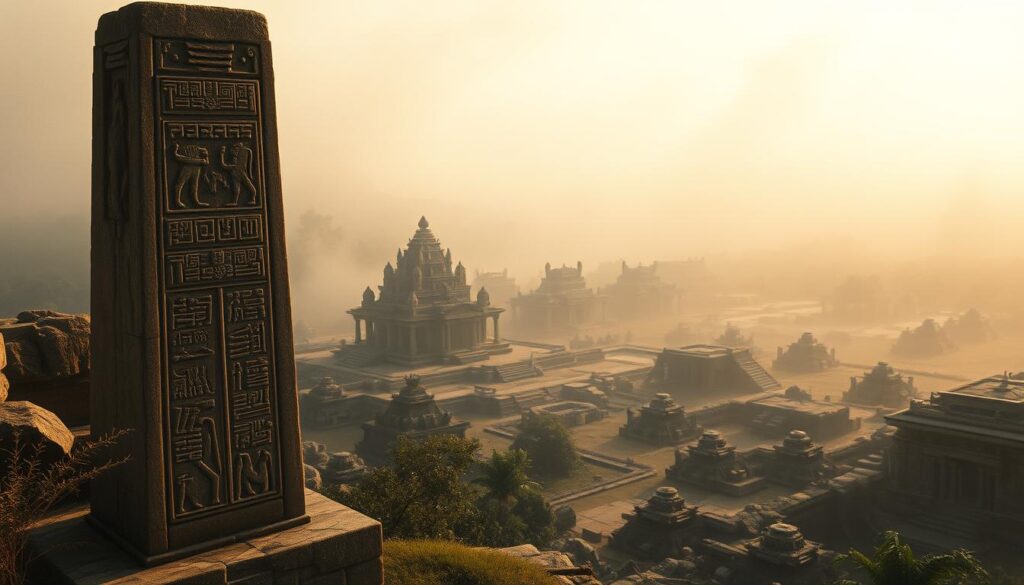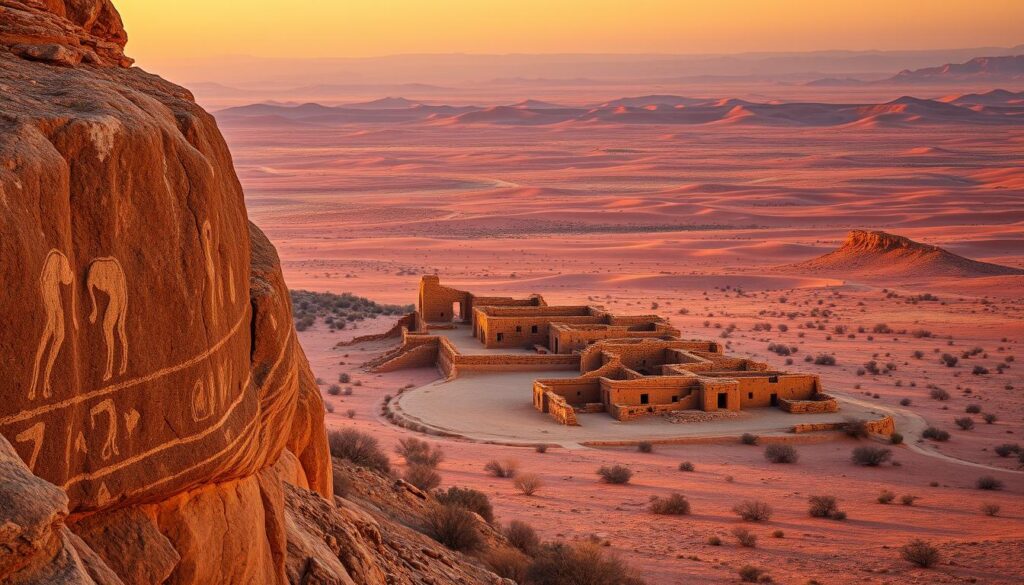Mysterious Civilizations That Vanished
Mysterious Civilizations That Vanished Uncovering the Truth, Many ancient civilizations have left us with a lasting legacy. But some have vanished, leaving only mystery and intrigue. The phenomenon of mystery civilizations that vanished has long fascinated people.
Lost cities and ancient civilizations spark our imagination. From the myth of Atlantis to the collapse of the Maya civilization, these enigmatic cultures continue to capture our attention.
The study of ancient civilizations that vanished can provide valuable insights. It helps us understand the rise and fall of societies. By exploring the remnants of these lost cities, we can uncover the truth behind their disappearance.
This mystery is a testament to the ingenuity and creativity of our ancestors. Their legacy continues to inspire and intrigue us.

The allure of mystery civilizations that vanished is undeniable. Many people are drawn to the romance and intrigue of lost cities and ancient cultures. As we delve into the world of ancient civilizations, we begin to appreciate their complexity and sophistication.
By examining the archaeological evidence and historical records, we can gain a deeper understanding. We can learn about the factors that led to their disappearance. This knowledge helps us understand the rise and fall of human societies.
Key Takeaways
- Many ancient civilizations have vanished, leaving behind only mystery and intrigue
- The study of lost cities and ancient civilizations can provide valuable insights into human history
- The phenomenon of mystery civilizations that vanished is a complex and multifaceted topic
- Ancient civilizations that vanished can teach us about the rise and fall of human societies
- The legacy of mystery civilizations that vanished continues to inspire and intrigue us
- The mystery of lost cities and ancient cultures is a testament to the ingenuity and creativity of our ancestors
- By examining archaeological evidence and historical records, we can gain a deeper understanding of the mystery civilizations that vanished
The Phenomenon of Mystery Civilizations That Vanished
People have always been drawn to the stories of ancient cultures. These stories spark our imagination and curiosity. The remains of these civilizations are now a focus for historians and archaeologists. Archaeological discoveries have helped us understand why these civilizations vanished.
These ancient cultures were known for their advanced knowledge in astronomy, mathematics, and architecture. For example, Egypt, Greece, and Rome left behind a lot of knowledge and artifacts. These have helped us learn about their lives.
Uncovering the secrets of these ancient cultures is an ongoing journey. New archaeological discoveries are made often. By studying these mysteries, we learn about the rise and fall of civilizations. We also see how environmental issues, war, and economic problems can lead to decline.
As we delve into these ancient cultures, we gain insights into our own society’s development. By looking into the mysteries of these civilizations, we understand human history better. We also see how our world is shaped by various factors.
Understanding Ancient Disappearances
To understand why some civilizations vanished, we must look at cultural collapse and its causes. Many factors can lead to a civilization’s decline, like environmental damage, war, and economic troubles. These issues can cause a society to disappear completely. By studying these factors, we can learn more about why ancient cultures vanished.
Archaeological finds are key to uncovering lost civilizations’ secrets. Artifacts, ruins, and other remains give us clues about their lives and beliefs. By examining these, experts can tell the story of a civilization’s rise and fall. This helps us understand what led to their cultural collapse.
- Environmental degradation: Deforestation, soil erosion, and climate change can all have devastating effects on a civilization’s ability to sustain itself.
- War and conflict: Prolonged warfare can lead to the depletion of resources, displacement of populations, and eventual collapse of a society.
- Economic decline: Economic instability, trade disruptions, and resource depletion can all contribute to a civilization’s downfall.
By looking at archaeological evidence and these patterns, researchers can better understand why ancient civilizations disappeared. This helps shed light on the mysteries of cultural collapse and societal extinction.
The Lost City of Atlantis: Myth or Reality?
The lost city of Atlantis has fascinated people for centuries. Many wonder if it’s just a myth or really existed. The story comes from ancient Greek philosopher Plato, who said Atlantis was a powerful, advanced civilization.
Plato said Atlantis was an island nation beyond the “Pillars of Hercules” (now the Strait of Gibraltar). Its people were known for their advanced knowledge and technology.
Despite many theories, there’s no solid proof of Atlantis’s existence. Yet, many believe the story might be based on a real event, like a devastating flood or earthquake. Some think the Minoan civilization on Crete might have inspired the Atlantis myth, because of its advanced palaces and drainage systems.
The search for Atlantis is still ongoing, sparking debate among scholars. Whether Atlantis is a myth or reality, its legend has captured our imagination. It has inspired countless works of art, literature, and film. The idea of finding a lost city or civilization is exciting and continues to inspire us.
| Theory | Description |
|---|---|
| Minoan Civilization | The Minoan civilization on the island of Crete may have been the inspiration for the myth of Atlantis. |
| Devastating Flood | A devastating flood or earthquake may have destroyed an ancient civilization, leading to the myth of Atlantis. |
Maya Civilization’s Puzzling Decline
The Maya civilization was a complex and sophisticated culture in Mesoamerica. It left behind a rich legacy of architecture, art, and knowledge. At its peak, the Maya civilization was known for impressive cities, intricate hieroglyphics, and advanced astronomy.
However, the Maya civilization’s puzzling decline has long fascinated historians and archaeologists. Researchers have proposed various theories to explain this decline. These include environmental degradation, warfare, and drought.
Archaeological discoveries have shed new light on the Maya civilization. They reveal a complex and nuanced society. This society was vulnerable to external and internal factors.
Some key factors that contributed to the decline include:
- Overexploitation of resources, leading to environmental degradation
- Warfare and conflict with neighboring cities and states
- Drought and climate change, which affected agricultural productivity
Recent archaeological discoveries have provided new insights. Excavations at Maya sites have uncovered evidence of widespread drought and environmental degradation. This may have contributed to the decline of the Maya civilization.
The Maya civilization’s puzzling decline remains a fascinating topic. Many questions still need answers. Further archaeological discoveries and research are needed to uncover the truth. This will shed new light on the Maya civilization and its puzzling decline.
The Enigma of Easter Island’s Collapse
Easter Island is a remote island in the Pacific Ocean. It is famous for the mysterious Moai statues. These statues have puzzled historians and archaeologists for centuries.
The collapse of Easter Island’s civilization is a fascinating topic. Many theories try to explain why it happened. One main reason was the overuse of the island’s resources. This led to deforestation and soil erosion.
The mystery of Easter Island’s collapse is still debated. Some think climate change was a factor. Others blame the introduction of invasive species. Despite many theories, the exact reason is still unknown. This makes Easter Island a fascinating case study.
Some key factors in the collapse include:
- Overpopulation and resource depletion
- Deforestation and soil erosion
- Climate change and drought
- Invasive species and disease
Researchers study the island’s history and culture. They aim to understand the events leading to the collapse. By looking at archaeological evidence and historical records, scientists try to piece together Easter Island’s story.
Angkor Wat: The Abandoned Kingdom
Angkor Wat, the ancient capital of the Khmer Empire, is a mysterious and impressive site. It shows the ingenuity and skill of the Khmer people. The Khmer Empire was a powerful and advanced civilization that lasted for centuries.
Rise of the Khmer Empire
The Khmer Empire grew strong in the 9th century, with Angkor Wat as its capital. It was known for its advanced irrigation systems. These systems helped grow rice and other crops, leading to economic and cultural growth.
Environmental Factors
Drought and deforestation likely hurt the Khmer Empire. The empire’s focus on agriculture made it vulnerable to climate changes. The loss of natural resources also reduced the population.
Recent Scientific Findings
Recent studies have revealed new insights into Angkor Wat and the Khmer Empire. Archaeologists used technologies like lidar and ground-penetrating radar. These tools helped uncover new discoveries and piece together the empire’s history.

- The Khmer Empire was a major power in Southeast Asia for over 600 years.
- Angkor Wat is one of the largest temple complexes in the world, covering over 1 square mile.
- The site is home to over 1,000 temples and monuments, including the famous Angkor Wat temple.
The Vanished Indus Valley Civilization
The Indus Valley civilization was a fascinating ancient culture. It thrived in the Indus Valley region of modern-day Pakistan and India. Known for its advanced urban planning, architecture, and water management, it vanished, leaving a lasting mystery.
Several factors led to its decline. These include environmental changes, like droughts and floods. Also, invading armies and conflicts with neighbors played a role. Lastly, the decline of trade and economic instability were significant.
The vanished Indus Valley civilization shows us how fragile human societies can be. It highlights the need to understand what causes their decline.
Studying the Indus Valley civilization offers insights into ancient cultures. It helps us understand the rise and fall of societies. By looking at its culture, architecture, and way of life, we appreciate its achievements and learn from its challenges.
Göbekli Tepe: The Mysterious Temple Builders
The discovery of Göbekli Tepe in modern-day Turkey has shocked the archaeological world. This revolutionary discovery has sparked many theories about its purpose and significance. The mysterious temple builders of Göbekli Tepe built this complex over 11,000 years ago.
Some of the key features of Göbekli Tepe include:
- Large T-shaped pillars, some of which are adorned with intricate carvings
- A series of circular and oval-shaped structures, which may have been used for ritual or ceremonial purposes
- A lack of evidence for permanent settlement or agricultural activity, suggesting that Göbekli Tepe was a specialized site
The Göbekli Tepe discovery changes how we see human history, especially the rise of complex societies. The fact that mysterious temple builders built such a complex structure so early challenges old ideas. As we learn more about Göbekli Tepe and its revolutionary discovery, we may find out more about these enigmatic mysterious temple builders.
The Anasazi: Disappearance in the Desert
The Anasazi civilization thrived in the southwestern United States desert. Their culture is both fascinating and mysterious. They left behind impressive architecture and artwork.
The Anasazi were skilled farmers, living in the harsh desert. Their disappearance has sparked much debate and research.
They were known for their advanced knowledge in astronomy, mathematics, and engineering. They built complex dwellings, known as pueblos, aligned with celestial bodies. Their irrigation system allowed them to farm and sustain their population.
Cultural Legacy
The Anasazi left a rich cultural legacy. Their pottery, weavings, and carvings are distinctive. These artworks often feature intricate designs and symbols.
Many people visit the desert to explore their ruins. They seek to learn about the Anasazi’s way of life.
Theories of Migration
Several theories explain the Anasazi’s disappearance. These include migration, drought, and conflict with other tribes. Some think they migrated to other parts of the southwestern United States.
Others believe environmental factors like drought or soil degradation forced them to leave.

The Anasazi’s disappearance is still a mystery. Yet, their cultural achievements and legacy captivate people worldwide. By studying the Anasazi, we gain insights into ancient civilizations’ challenges and contributions to our shared heritage.
Modern Archaeological Methods Revealing Ancient Secrets
Modern archaeological methods have changed the field of archaeology a lot. They have uncovered secrets from ancient times that were once unknown or not understood. These methods help us learn more about the lives of ancient people, including their cultures and traditions.
Advanced technologies like ground-penetrating radar and thermal imaging let archaeologists explore sites without damaging them. Geographic information systems (GIS) help analyze the data from these sites. This gives us a better understanding of ancient landscapes and settlements.
Some important discoveries made with these methods include:
- Discovering hidden cities and settlements
- Showing us ancient trade networks and cultural exchange
- Helping us understand ancient environmental practices and their effects today
These discoveries change how we see human history. They show us the complexity and variety of ancient cultures. As archaeologists keep using these methods, we’ll learn even more about the past.
Lessons from Lost Civilizations
Studying lost civilizations teaches us important lessons for today. They warn us about the dangers of harming the environment and social breakdown. By looking at how past civilizations rose and fell, we learn the value of caring for our planet and each other.
Environmental Warnings
One key lesson is the importance of listening to environmental warnings. The downfall of places like Easter Island and the Maya civilization was due to environmental damage. These stories caution us against ignoring environmental issues.
Relevance to Modern Society
The lessons from lost civilizations are very relevant today. We face similar environmental problems like climate change and deforestation. By learning from past mistakes, we can take steps to protect our planet. By focusing on sustainability and listening to environmental warnings, we can build a better future.
- Learn from the past to inform decisions and actions
- Prioritize environmental sustainability and social responsibility
- Adopt sustainable practices to mitigate environmental challenges
Conclusion: The Continuing Search for Answers
The search for secrets of lost civilizations is a fascinating journey. We’ve looked into the stories of the Maya, Angkor, and Anasazi. It’s clear that thesearch for answers
about their fate still excites many.
Thanks to modern tools, we’ve learned a lot about these mysterious societies. Discoveries like Göbekli Tepe and the Indus Valley Civilization give us clues. Each find helps us understand why they vanished.
Reflecting on these lost cultures teaches us about human societies’ fragility. It shows the value of preserving our cultural heritage. Their stories warn us about environmental damage, social issues, and collapse.
The quest to learn about lost civilizations will go on. With each new discovery, we uncover more of the mystery. By following their curiosity, we honor their legacy and gain insight into our own history.
FAQ
What is the phenomenon of mystery civilizations that vanished?
Mystery civilizations that vanished are ancient cultures that once thrived but now are gone. They leave behind only hints of their past. Historians and archaeologists are intrigued by these lost cultures, wondering why they vanished.
What are the common patterns and characteristics of these mysterious civilizations?
These civilizations often faced environmental damage, wars, economic downturns, and societal collapse. Studying these factors helps us understand why they disappeared.
What is the myth of the lost city of Atlantis, and is there any evidence of its existence?
The myth of Atlantis has captured our imagination for ages. It’s a story of a lost city that has inspired many theories. While Atlantis’s existence is not proven, ongoing research keeps the mystery alive.
What led to the decline of the Maya civilization?
The Maya were known for their advanced cities and knowledge. Yet, their civilization mysteriously declined. Theories include environmental issues, social unrest, and economic troubles.
What is the enigma of Easter Island’s collapse?
Easter Island is famous for its Moai statues. The island’s civilization collapse is a mystery. Theories range from environmental damage to societal upheaval.
What factors led to the abandonment of the Angkor Wat kingdom?
Angkor Wat, the ancient Khmer Empire’s capital, is a marvel. Its abandonment is attributed to droughts, floods, and internal strife.
What is the mystery surrounding the Indus Valley civilization?
The Indus Valley civilization is a puzzle. It thrived in what is now Pakistan and India. Theories on its decline include environmental changes and social unrest.
What is the significance of the Göbekli Tepe archaeological discovery?
Göbekli Tepe in Turkey is a groundbreaking find. It challenges our understanding of ancient societies. The discovery has reshaped our view of human history.
What happened to the Anasazi civilization?
The Anasazi were a Native American culture that vanished. Their disappearance is still debated. Theories include migration and environmental factors.
How are modern archaeological methods revealing ancient secrets?
New methods and technologies are uncovering ancient secrets. Tools like advanced imaging and genetic analysis are expanding our knowledge of the past.
What lessons can we learn from the study of lost civilizations?
Studying lost civilizations teaches us about the dangers of neglecting our environment and societies. These lessons are crucial for our own survival and prosperity.
Source
https://www.maloriesadventures.com/blog/the-weirdest-lost-civilizations-throughout-history?utm
https://www.history.com/news/6-civilizations-that-mysteriously-collapsed?utm
